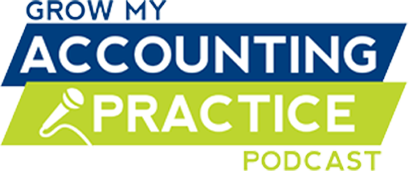Profitability is the main key to business success. But maintaining that profitability is becoming more difficult for private practice optometrists. There is increasing competition from big box stores, mall kiosks, and the internet to overcome. Online refractions and other commoditized industry services make it hard for private practices to remain relevant in the marketplace. Take some notes from some of the industry’s thought leaders to overcome these hurdles and make your practice more profitable this year.
Tip 1: Improve Your Customer Service | Dr. Eric White, OD
Dr. White has one of the highest Yelp scores among private practice optometrists and has one of the highest per-patient revenues in the country. He attributes some of this success to his approach to interacting with his patients. One common belief in the industry is that this is a numbers game. To be successful, a doctor must see a large volume of patients, can only spend fifteen minutes with each person, and thus must move through appointments very fast.
Dr. White has taken a different approach. He treats his patients like family members. Instead of rushing through the exam, his patient interactions begin with icebreakers and catching up with that patient’s life. It’s not uncommon for Eric to ask patients about their family, their vacations, or anything else personal that’s important to them.
He also goes so far as giving patients his personal cell phone number. Other doctors have asked him before why he would do such a thing. He simply responds, “Does your family have your cell phone number?” Yes, of course, because they’re family. Exactly. Treating your patients like family means they have some of these same privileges.
Action Steps: Take a little extra time to get to know your patients. This will help you win them over. Also, handwrite a personal thank you note at the end of every day. Take that opportunity to ask for online reviews and referrals.
Dr. Eric White, OD has been in private practice since 1985. His practice, Complete Family Vision Care Optometry, is in San Diego, California. Learn more here: http://www.drericwhite.com.
Tip 2: Upgrade the Patient Experience and Constantly Evolve | Dr. Aaron Neufeld, OD
Dr. Neufeld’s advice to compete with the increasing outside pressures on the industry is to constantly evolve with the market and innovate in your practice. The days of having a practice, sitting back and doing the same things day in and day out are over if you want to have a flourishing practice. Although the science remains the same, finding new ways to do things and improving your processes as the market evolves is a must in today’s constantly changing business climate.
Another key piece of advice is to upgrade your patient experience and, by doing so, increase your patient retention. Dr. Neufeld points out is easier to keep an existing patient than it is to add new ones. Although new patients should be added consistently, it should not come at the expense of your existing patients. The patient experience in a private practice should transcend any of the alternatives on the market.
Upgrading the patient experience starts with being personable and building a relationship. Find ways to show patients they are the #1 objective in your practice. Educate them on the different eye conditions that may get missed if they go to less experienced or cheaper exam providers. Put the patient first in all aspects of the practice. Dr. Neufeld’s practice even goes as far as making home deliveries! Patients are more apt to be loyal and come back if they perceive you really value them.
Action Steps: Look at the systems and processes in your own practice and identify if they are out of date. Identify several ways you can go above and beyond patient expectations to demonstrate their value to your practice.
Dr. Aaron Neufeld, OD is an Owner/Optometrist at Los Altos Optometric Group in Los Altos, California. Learn more here: http://www.losaltoseyes.com
Tip 3: Focus on Building a Better Team | Steve Vargo, OD, MBA
A good team is arguably the most valuable resource in a private practice. A mediocre staff can make it incredibly difficult to move forward and grow. A poor staff will weigh the practice down and keep it from growing. If the staff is unmotivated and noncompliant, plan on spending more time putting out fires than growing a profitable business.
Successful practices are built on a true collaboration of people putting forth their best efforts to serve the patients. Although this is a big undertaking, some of the steps you need to consider are utilizing good interviewing systems to make sure the right staff is being hired, putting together comprehensive training systems for all staff, and having office processes that empower employees to really serve the customer.
One major benefit of focusing on building a highly competent staff is that the practice starts to become less dependent on the owner. The average optometrist owner spends 80-85% of their time in the exam room. Meanwhile, nobody is running the business and working on future growth. Optometrists should work towards a CEO model where they spend more time working on business development and management. They shouldn’t stop seeing patients altogether but try to have more balance in their daily activities.
Action Steps: Review hiring processes and office processes for efficiency. As a practice owner, improve your ability to lead and hold staff accountable to specific outcomes. Identify ways to move more of your time out of the exam room and into business development.
Steve Vargo, OD, MBA is a practice management consultant at IDOC. Learn more here: http://idoc.net/
Tip 4: Consider Specialty Marketing | Nancy Rausman
One of the things Nancy Rausman and EyeCarePro is focusing on is bringing the eye doctor back into medical care. Patients can already get cheaper glasses and contacts and, in some cases, even a basic exam online. But there is a level of care that only a doctor can provide, which is where private practice optometrists can really thrive.
Specializing in a specific issue or using higher tech equipment for more in-depth testing are two ways to accomplish this. Specialization creates more trust and loyalty with patients because it shows you are sincerely interested in their complete eye health.
Profitability can be directly impacted by specialization in a couple of other important ways. First, specialized services typically carry higher profit margins. You buy the equipment or training once, then continually charge more for the related services. Second, some of these higher priced services may not be covered by insurance, which attracts a more affluent patient to your practice. These patients are not usually looking for the cheapest options. They want to deal with experts that truly value their business and reward service providers with loyalty.
Above all else, if you’re going to specialize in your practice, make sure to let people know! Get the word out that your practice is newly certified or uses the latest technology. If nobody knows what you do, they’ll simply lump you in the same box as every other general optometrist they know.
Action Steps: Turn yourself into a medical expert. Then let your potential patients know about it! Start by looking at your community and existing clientele to determine needs that are currently not being met.
Nancy Rausman is managing editor at EyeCarePro, one of the leading providers of online marketing and practice development services in the industry. To contact Nancy, email nancy@eyecarepro.net.
Tip 5: Plan to be Profitable and Implement a System to Achieve It | Eric Levenhagen
Many small business owners expect their business to be profitable. They work towards that goal by driving sales month after month and trying to keep an eye on cash while keeping costs as low as they reasonably can. Some owners use tools like a Profit & Loss Statement to manage these costs, while many others must constantly look at their bank balance to judge their success. These are outdated ways to manage your business finances and won’t help you maximize profits.
First, optometrist owners should flip the outdated formula of Sales – Expenses = Profit. This formula leaves the most important thing in your business, your profits, in the least important position (at the bottom). Almost like you’re expected to live off leftovers. Instead, flip the formula like this: Sales – Profit = Expenses. Now you’ve moved profit into a place of priority; your profit is first. Next, instead of working from financial reports that are 3-5 pages long, learn to consolidate the most important financial info you need in your business to one page. It will be easy to look at, easier to spot trends and figure out where your business needs your attention the most in real time.
Action Steps: Implement a cash management system that puts your profit first. Streamline your financials to look at what is most important. Lean on your accountant and hire a good financial coach to hold you accountable.
Eric Levenhagen is the Head Coach at ProWise Financial Coaching. Learn more about Eric and his firm here: www.prowisefinancial.com.
Now don’t just let all this knowledge sit in your head without action. The only way you really make this next year the most profitable year of all is to do something with what you’ve learned! Implement an idea, measure the results, and adjust as necessary. It’s the only sure way to improve.

Eric Levenhagen’s mission is to empower entrepreneurial abundance for self-employed service professionals. Connect with him at www.prowisefinancial.com.










